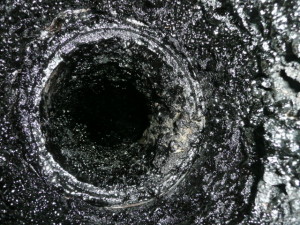 What cause Tar Build Up within a flue?
What cause Tar Build Up within a flue?
The smoke from wood fires and stoves will contain a full range of hydrocarbons dissolved in it. As the smoke cools within the flue, it will start to deposit these hydrocarbons onto the surface of the flue. This process starts with the heavier oils, such as tar, and moves onto creosotes and even paraffin as you progress up the flue. Once deposited onto the surface of the flue, this tar build up is very hard to remove without causing further damage to the flue. All of these hydrocarbons are highly flammable and are the main cause of chimney fires.
What can you do to prevent a tar build up?
To help prevent a build up of these deposits only well seasoned woods should be used. If the flue is being used by an appliance such as a solid fuel stove the fuels should be burned at the optimum temperature for the appliance. Continual operation of a stove at a low temperature will generate high volumes of these hydrocarbons within the flue gasses. Stoves left to burn overnight will only partially combust the fuel, producing cool flue gasses with high concentrations of hydrocarbons that will subsequently condense within the flue.
What can Turner Baker Ltd do to help?
If the smoke can be held at a constant temperature while it passes through the flue this will also prevent any condensation of these hydrocarbons. This will occur if the heat losses within the flue can be reduced by two processes:
- Increasing the flue’s thermal properties.
- Reducing the flue size, by lining, to ensure the flue gasses pass through the chimney at the optimum velocity.
In order to achieve this Turner Baker are able to supply and fit a range of lining products, and suitable insulation, that ensures you have a flue with good thermal properties.
 (01432) 839123
(01432) 839123







